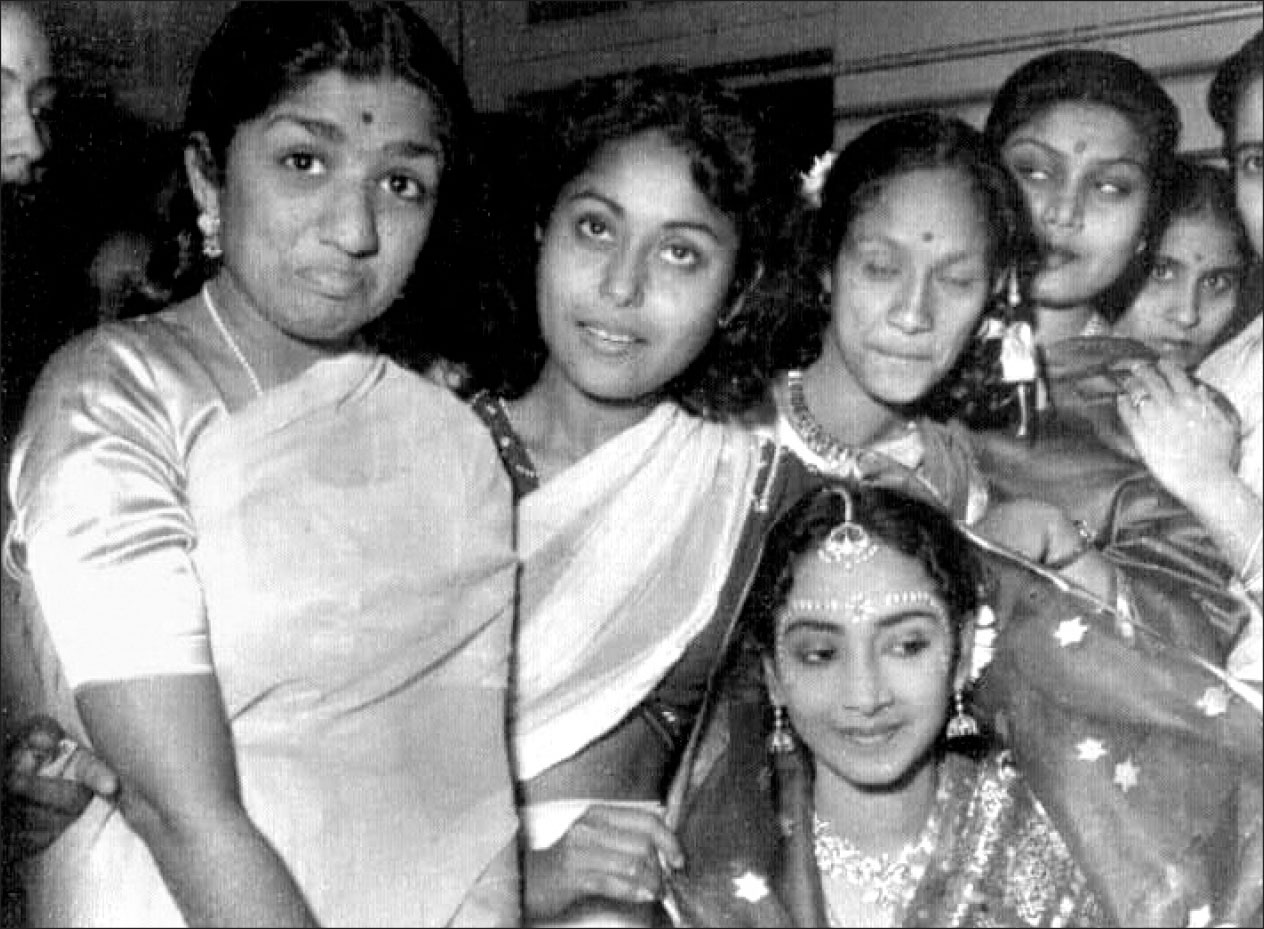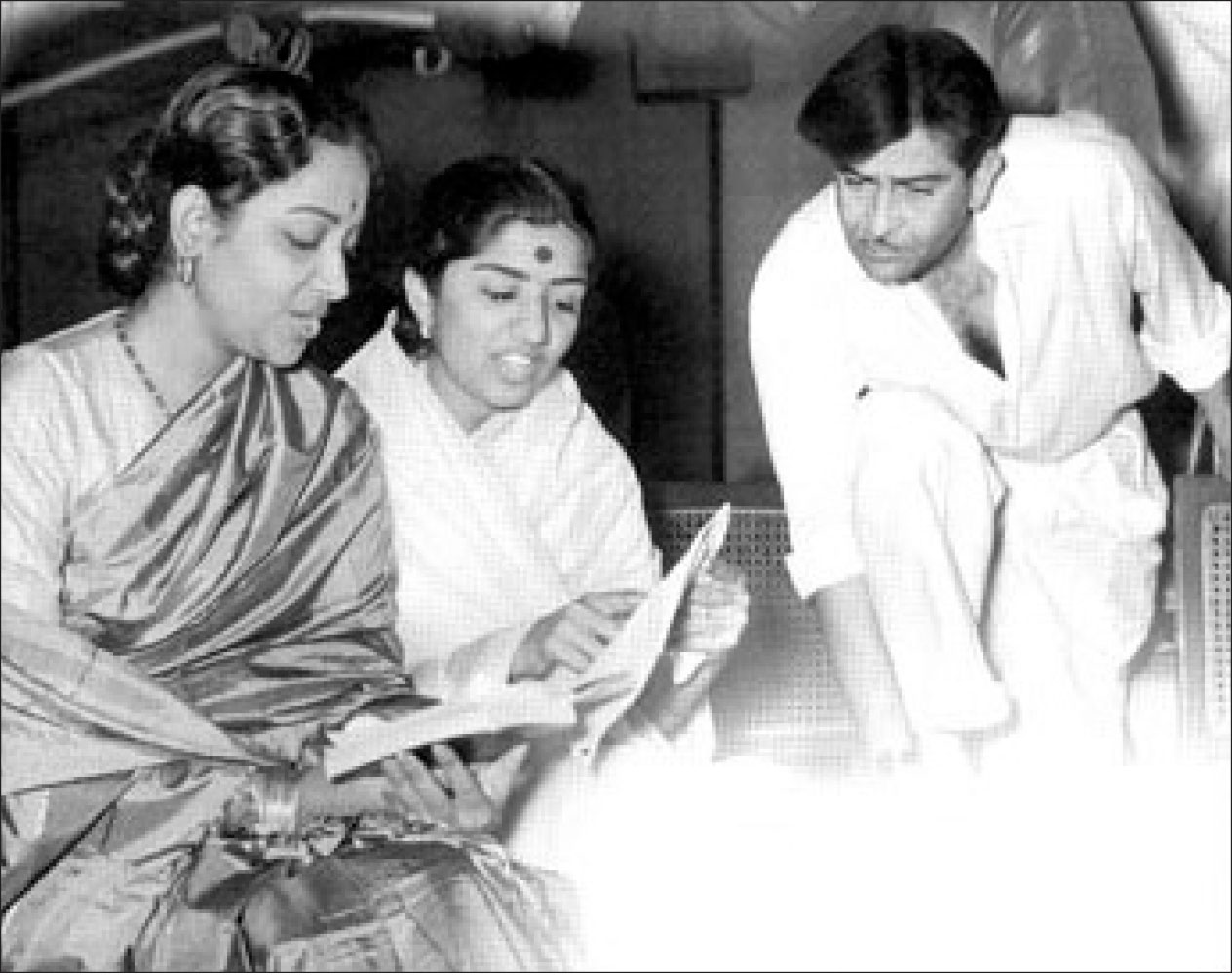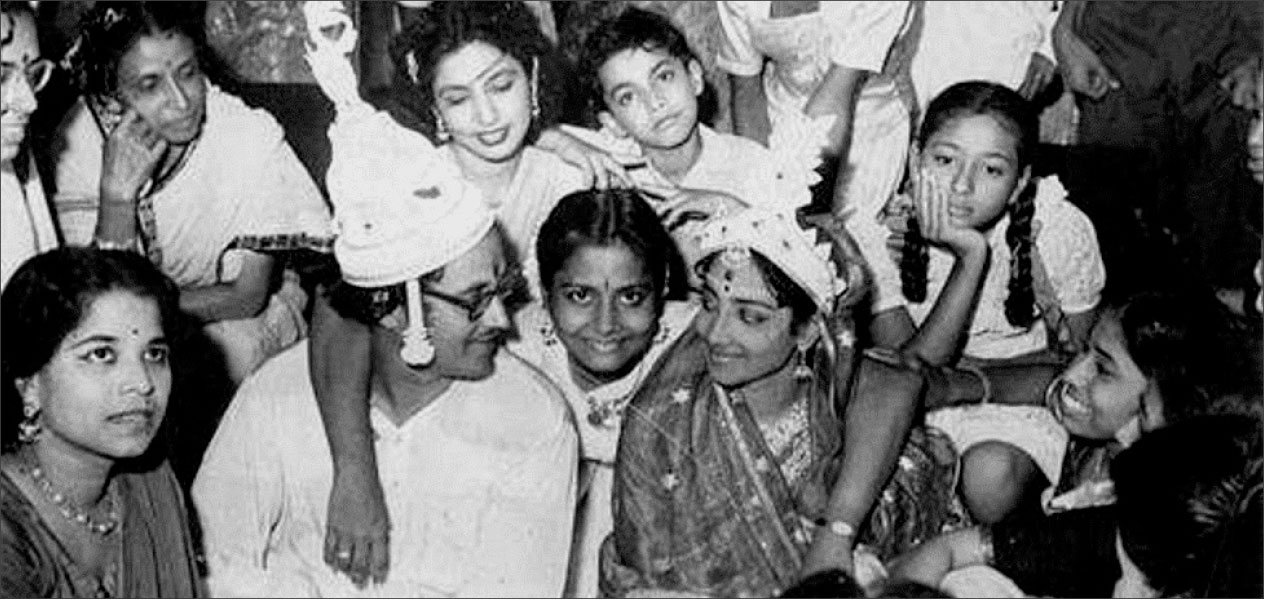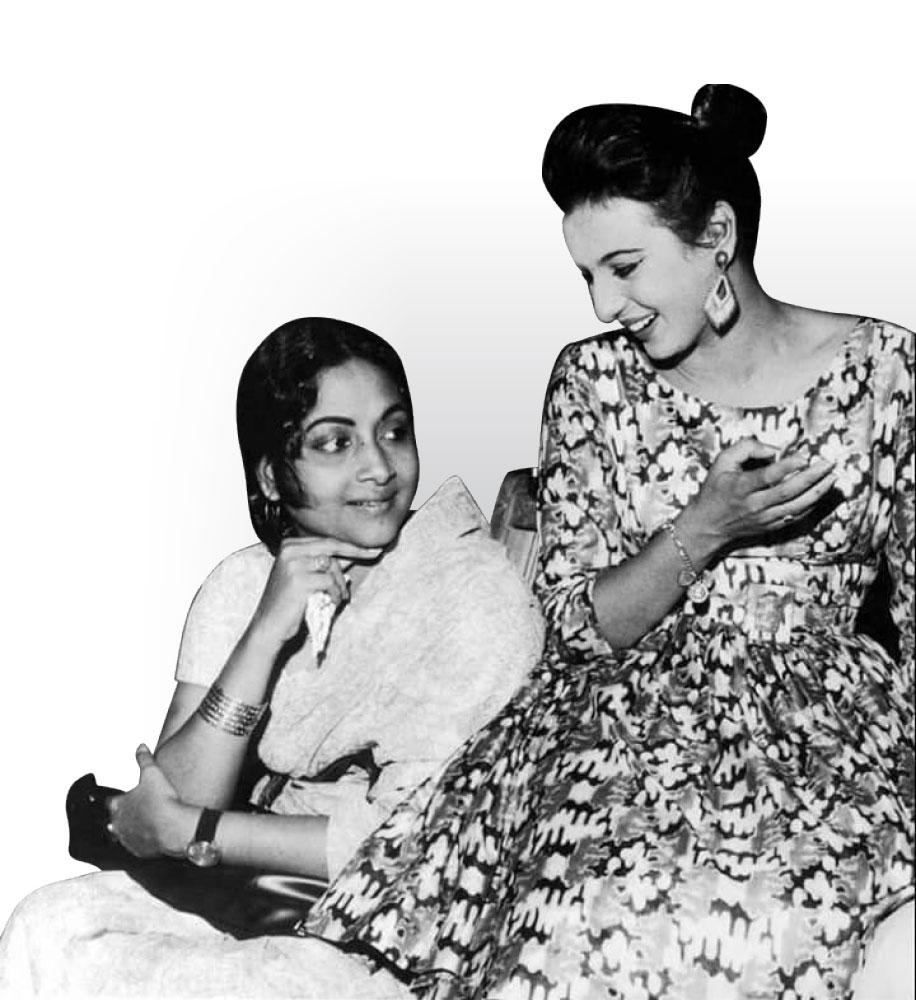Geeta Dutt the ballerina of song
Just mention her name, and music lovers get misty-eyed. Geeta Dutt had an exquisite, almost ethereal voice, and gave Bollywood music some of its most radiant gems during the late 1940s and 1950s. Hers was a short but resplendent life and career, which ended tragically in 1972 when she was only 41.
Her voice defied analysis and inspired adoration. It could articulate melancholy with scorching intensity, with a faint tremor that heightened its impact. It could project mirth or playfulness with an infectious sprightliness. O P Nayyar described her voice as a “natural miracle”. She was referred to as a skylark, a ballerina of song.
No playback singer could convey feelings better than Geeta Dutt, said music historian Ganesh Anantharaman. Manna Dey said that Lata Mangeshkar and Asha Bhosle had imitators, but none could imitate Geeta Dutt. Film music critic Raju Bharatan said Geeta did not sing, she glided into a song.
It is said that the one singer Lata feared till the late 1950s was Geeta.
Geeta sang some 1,200 songs — mostly in Hindi, but also in Bengali and Gujarati — of which at least 50 were superlative. She was the No 1 singer for two years from 1947 after the song Mera sundar sapna beet gaya in the film Do Bhai became a sensation. Never had the searing pain of lost love been conveyed so memorably, so magically, as in this song — which 16-year-old Geeta rendered for S D Burman in a voice of intoxicating sweetness. All of India was captivated. Disc sales of the song shattered records. The song mesmerises even today.

Geeta was dethroned as No 1 by Lata Mangeshkar after the phenomenal success of Mahal, Barsaat and Andaz in 1949. But it is said that the one singer Lata feared till the late 1950s was Geeta.
The beginnings
Geeta Roy Chowdhury was born in 1930 into a rich zamindar’s family in Faridpur, now a part of Bangladesh. In 1942, when she was 12, her parents moved to Bombay because the Quit India movement had become an anti-landlord movement. It was a steep downturn in fortunes for the once-prosperous family.
The family lived in a modest flat in Dadar. Geeta was fond of singing and humming. Music composer Hanuman Prasad overheard her once, and was entranced. He engaged Geeta to sing a couple of lines in a chorus song in the movie Bhakta Prahlad (1946).

Geeta caught the attention of S D Burman, and her talent blossomed under his direction. She sang six songs in the 1947 Do Bhai. Mera sundar sapna, filmed on Kamini Kaushal, immortalised the film and conferred instant stardom on the singer.
Geeta scored another resounding triumph with her sublime Meera bhajans in the 1950 Jogan, a Dilip Kumar-Nargis starrer, in which she sang 12 songs. Nargis’s serene beauty, the melody of the songs and the religiosity and depth of feeling Geeta imparted to them enthralled listeners. Ghungat ke pat khol has acquired iconic status, but Mat jaa mat jaa jogi, Main to giridhar ke ghar jaoon and Aeri main to prem diwani were also devotional stunners.
The superstars of Bollywood music — Lata, Rafi, Kishore, Hemant Kumar, Talat Mahmood — took part in Geeta and Guru Dutt’s wedding. And all of them sang!
She was inundated with offers and sang for many composers. (Khayalon mein kisike in the 1950 Bawre Nain for composer Roshan, a duet with Mukesh, was a beauty.) But she got branded as the voice of bhajans and melancholia. However, S D Burman engineered her image makeover through the 1951 Baazi, directed by Guru Dutt, where she sang the saucy, jazzy, mischievously seductive Tadbeer se bigdi huyi taqdeer bana de. It was filmed on Geeta Bali teasing Dev Anand. Both the Geetas excelled. Dev Anand says many fans saw the film just for this song, and left the cinema hall after the song was over!

This song was special for another reason. Aspiring director Guru Dutt met her during a recording of the song, and fell head over heels in love with the dusky, doe-eyed, long-haired beauty. Guru’s family too was charmed by her humility and affectionate disposition. She would drop in at their house, play the harmonium or sing songs. Geeta’s family was less enthusiastic about the romance, one reason being that Geeta was the family’s breadwinner. But eventually, Geeta and Guru got married in 1953 in a fairytale wedding in Bengali style, and the lovely bride, clad in a red Banaras sari, stole all hearts. The superstars of Bollywood music took part: Lata, Rafi, Kishore, Hemant Kumar, Talat Mahmood. And all of them sang!
The O P Nayyar connection
If S D Burman introduced Geeta to the limelight, O P Nayyar made it seem that she belonged there. She sang four solos in Nayyar’s first film Aasman (1952) including the splendid Dekho jaadubhare more nain and the soulful Dil hai deewana. The film bombed, but these songs won high praise. Geeta did O P a great favour by recommending his name to Guru Dutt for his film Baaz (1953). Once again, Geeta excelled but the film flopped. But Nayyar then delivered brilliantly for Guru Dutt with three musical blockbusters. His forte was feisty, spunky, sprightly songs of hope and optimism. And Geeta gave them life and voice.

- She scintillated in Aar Paar (1954) with Babuji dheere chalna filmed on Arabian beauty Shakila — arguably the most popular night club song in Bollywood history. Equally infectious were Yeh lo mein haari piya, Hoon main abhi jawan, and Ja ja ja ja bewafa.
- In Mr & Mrs 55 (starring the beauteous Madhubala and Guru Dutt) every song was a delight. There was the effervescent group song led by Geeta — Thandi hawa kaali ghata aa hi gayi jhoom ke. (Raju Bharatan remarked that Geeta herself was thandi hawa and khali ghata rolled into one.) There were two breezy Geeta-Rafi duets, and the achingly beautiful yearning-for-the-lover song Preetam aan milo.
- In CID, Nayyar gave Bollywood the sizzling Geeta-Rafi duet Yeh hai Bombay meri jaan (which was much loved and recreated in university campuses); a second feisty duet by the same pair (Aankhon hi aankhon mein ishara ho gaya), and the effervescent Geeta’s romantic hit Jaata kahan hai deewane. Under Nayyar, the singer of sweet melancholy was becoming the epitome of insouciance!
Geeta sparkled in some songs outside the Guru Dutt banner as well. Examples: the 1954 Na ye chand hoga in Shart for Hemant Kumar, which was drenched gently in love; and the 1956 Bhai Bhai song Ae dil mujhe bata de, which exemplified the exhilaration of teenage love, for Madan Mohan. The peerless Lata sang eight songs in Bhai Bhai and Geeta just one — but it’s Geeta’s song that made the best impact!
Geeta’s pain-wracked voice and restrained emotion made the song Waqt ne kiya a heart-wrenching song of despair.
1957 saw Guru Dutt release the brooding Pyaasa, about the exploitation of a poet by society. It turned out to be a landmark movie. S D Burman’s music was a tour de force. One of the standout songs was Geeta Dutt’s bhajan Aaj sajan tohe ang laga lo, which reflected both eroticism and bhakti — something Geeta’s musical genius managed splendidly. The song began on a low octave and rose to a spell-binding crescendo. She also sang the flirtatious Jaane kya tune hi filmed on Waheeda, and a melodious romantic duet with Rafi — Hum aapki aankhonme. Geeta had demonstrated awesome versatility through a single movie.
The troubled years
When Geeta married Guru Dutt in 1953, her career was on song, while Guru was a struggling director. Reports that he had married Geeta for money enraged Guru; he told Geeta to stop singing for other banners. She was devastated, this was like depriving her of oxygen. She took to singing on the sly for other composers, and when Guru discovered this, he exploded. Dark clouds began to hover over what was once a fairy-tale marriage, despite three children whom both parents doted on.
Waheeda Rahman entered Guru Dutt’s life in 1956 with the film CID, and the stories of his infatuation for her pained Geeta. She had almost surrendered her career for her husband, and she couldn’t bear the idea of losing the husband to another woman. Geeta took to the bottle to drown her sorrow.

To placate Geeta, Guru offered to make a film with her as heroine. She was delighted, but Gauri got abandoned after some heated quarrels between the couple, reportedly over Waheeda Rahman.
In 1957, S D Burman had a rift with his singing mainstay Lata. He would have liked to replace her with Geeta Dutt for all his songs, but she wanted to return home every day by 5pm, before Guru came back from the studio. This was unacceptable to a hard taskmaster like S D, and he opted for Asha Bhosle. So did O P Nayyar for other reasons, and Geeta lost the support of her two stoutest benefactors. Other composers too in the next few years found that engaging Geeta was a hassle and stopped trying.
Geeta found most hurtful the rejection by Nayyar, perhaps because she had launched his career, also because she had sung so many chartbusters for him. She phoned him one day and asked “What wrong have I done, that you never send for me?” Another night, she called and asked “Do you recognise this voice?” O P felt guilty but had no satisfactory answer. Years later, after Asha left O P, the composer confessed that he had been unfair to Geeta.
But in the 1958 Howrah Bridge, a musical blockbuster, Nayyar gave Geeta one song, a cabaret number on Helen — Mera naam chin chinchu. This jaunty boisterous song outdid in popularity the three Asha solos of the film — including, incredibly, the wonderfully choreographed Ayiye mehrbaan, a signature song of both Madhubala and Asha Bhosle.
Amidst the turmoil at home, Guru Dutt made Kagaz Ke Phool in 1969, with Waheeda as heroine. Ironically, Geeta sang the timeless Waqt ne kiya in this film, about two tormented souls in love, seeking a fulfilment that was far off (music by S D Burman). Geeta’s pain-wracked voice and restrained emotion made it a heart-wrenching song of despair. Lyricist Kaifi Azmi, cinematographer V K Murthy and director Guru Dutt also poured their hearts and their genius into the song. Result: a work of immortality that’s a must-study exercise for all students of cinema. Waqt ne kiya figures in every listing of great Bollywood songs.
Unfortunately, the film bombed, and Guru Dutt ran into heavy debt.
He rebounded within eight months, however, with the film Chaudhvin ka Chand (1970). The family’s finances improved but the Dutt couple’s estrangement grew, particularly because Geeta was given just one song in Chaudhvin ka Chand.
But Geeta sang two emotionally scorching solos in Sahib, Bibi aur Ghulam (1962), the next Guru Dutt venture, thanks to composer Hemant Kumar. He insisted that Geeta would be the voice of heroine Meena Kumari. How poignantly did Geeta portray Meena’s angst through the songs Na jao saiyan chudi ke baiyan and Koi door se awaaz de chale aao!

Sahib, Bibi aur Ghulam is today revered as a classic, and has won several awards, but it was a commercial failure on release. Guru was distraught. And Waheeda decided to withdraw from Guru’s life. In 1964, Guru committed suicide — or so it is generally believed — after an overdose of sleeping pills. Geeta was shattered and inconsolable. She tried to support her family through live shows, but couldn’t give up drinking.
In 1971, Geeta demonstrated her incandescent talent for the last time through the movie Anubhav for which her brother Kanu Roy composed the music. Meri jaan mujhe jaan na kaho, filmed on Tanuja romancing Sanjeev Kumar, hypnotises one and all even today with “the voice that defies description”.
In 1972, Geeta departed. Alcohol took its toll, and she died of cirrhosis of the liver. But she had perhaps lost her will to live.
Mera sundar sapna beet gaya was one of Geeta’s iconic songs. Tragically, the song was her own epitaph.
The author is a senior journalist and a member of the Rotary Club of Madras South.


